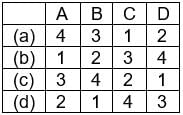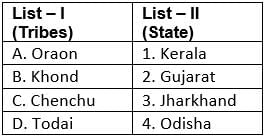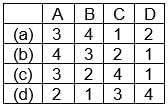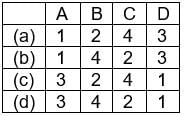Test: Population - 2 - UPSC MCQ
20 Questions MCQ Test - Test: Population - 2
On which one among the following islands, does the Negrito tribe called ‘the Onge’ live?
Which of the following are true of matrilineal societies?
1. Newly married couple stays with the woman’s parents.
2. As per the rules of inheritance, the property passes from mother to daughter.
3. Women play a dominant role in the family.
4. Examples of matrilineal societies are those of the Khasi and Jaintia tribes of Meghalaya.
Select the correct answer using the codes given below
As per the provisional figures of 2011 Census of India, which one of the following States has the highest child sex ratio?
Which one of the following states of India has the highest urban density?
Among the following Union Territories the female literacy is highest according to Census 2011.
As Per Census 2011, the Total Fertility Rate (TFR) of India is —
The percentage of the population in the age group 20 years and above out of the total population of India as per 2011 Census is—
Which of the following tribes of Uttarakhand is mainly involved in the sheep rearing?
The rapid growth phase of Indian population was lying between which of the following time periods?
Which one of the following terms denotes the net population increase of towns and cities?
According to the Census 2011, the Indian State which had the best Sex (male-female) ratio of 1,084 females for 1000 males is—
A social institution called Dhumkuria belongs to which tribe?
Match List-I with List-II and select the correct answer from the codes given below—

Codes:

A gradual change in the manner of population growth occurring over a long period of time is known as—
Which among the following was used as the motto for Census of India 2011?




















